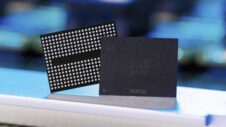Samsung's chip business has long been the company's cash cow. It has contributed tens of billions of dollars in profit to the company's coffers but has recently been struggling. That's largely due to both the demand and price of chips plunging significantly in the second half of 2022.
The company has been investing heavily in its semiconductor business to enhance its capacity and capability for the future. It wants to keep doing that even in these challenging times which is why Samsung is now borrowing close to $16 billion.
When borrowing is simpler than using your own cash reserves
Samsung's Q4 2022 results highlight the scale of the problem. Overall profit was down 70% in addition to a 9% drop in revenue. Its chip division almost had an operating loss for the first time in nearly a decade, as profit declined by 97%.
Since 2019, Samsung has a plan to invest over $100 billion in its chip manufacturing facilities. The company's overall infrastructure investments exceeded $40 billion last year and nearly 90% of that was poured into the semiconductor business.
In a bid to keep up investments at the same rate, Samsung Electronics is now planning to borrow $15.78 billion dollars, and it's doing that from another Samsung company. Samsung Display has around $16 billion in reserve funds and since Samsung Electronics owns an 85% stake in the company, it's not difficult for the latter to access that money.
Korean media has picked up a regulatory filing made by Samsung Electronics that reveals the company is taking this money as a loan from Samsung Display to be paid by August 17, 2025 at an interest rate of 4.6%.
Samsung Electronics has reportedly decided against tapping into its own reserve funds that are in excess of $80 billion as they likely include cashable assets of various types that may be allocated to different business units. It's also possible that a chunk of those funds may be outside South Korea. Taking a loan from Samsung Display is apparently going to be a lot simpler.
The investment outlay in the chip business for 2023 includes construction of a new production line at the Pyeongtaek Campus, capacity expansion for next-generation chips, and completion of Samsung's new chip manufacturing plant in the United States. A significant chunk of the funds will also be used for research and development.
Samsung will certainly be hoping that both demand and prices for chips increase over the next few years so that it's able to generate a decent return on this investment.







